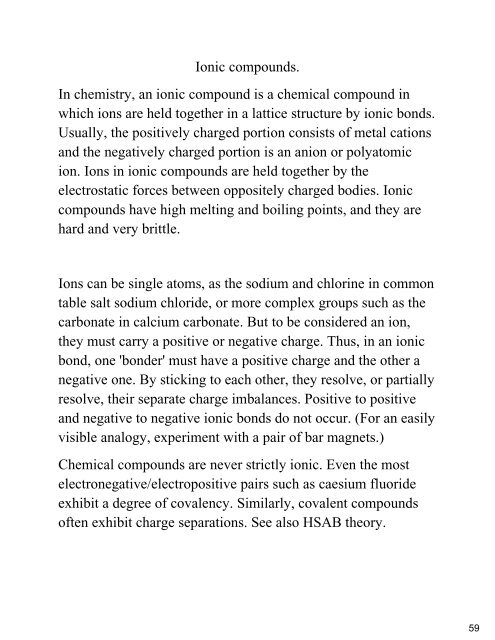You also want an ePaper? Increase the reach of your titles
YUMPU automatically turns print PDFs into web optimized ePapers that Google loves.
Ionic compounds.<br />
In chemistry, an ionic compound is a chemical compound in<br />
which ions are held together in a lattice structure by ionic bonds.<br />
Usually, the positively charged portion consists of metal cations<br />
and the negatively charged portion is an anion or polyatomic<br />
ion. Ions in ionic compounds are held together by the<br />
electrostatic forces between oppositely charged bodies. Ionic<br />
compounds have high melting and boiling points, and they are<br />
hard and very brittle.<br />
Ions can be single atoms, as the sodium and chlorine in common<br />
table salt sodium chloride, or more complex groups such as the<br />
carbonate in calcium carbonate. But to be considered an ion,<br />
they must carry a positive or negative charge. Thus, in an ionic<br />
bond, one 'bonder' must have a positive charge and the other a<br />
negative one. By sticking to each other, they resolve, or partially<br />
resolve, their separate charge imbalances. Positive to positive<br />
and negative to negative ionic bonds do not occur. (For an easily<br />
visible analogy, experiment with a pair of bar magnets.)<br />
Chemical compounds are never strictly ionic. Even the most<br />
electronegative/electropositive pairs such as caesium fluoride<br />
exhibit a degree of covalency. Similarly, covalent compounds<br />
often exhibit charge separations. See also HSAB theory.




